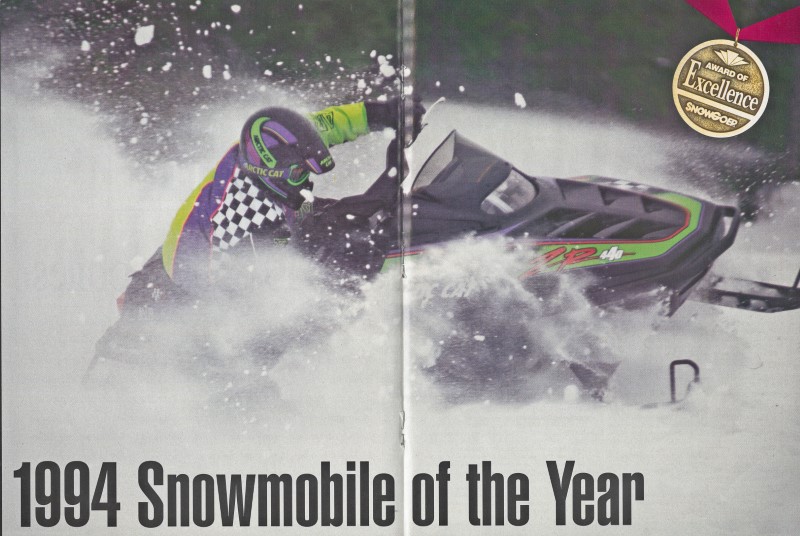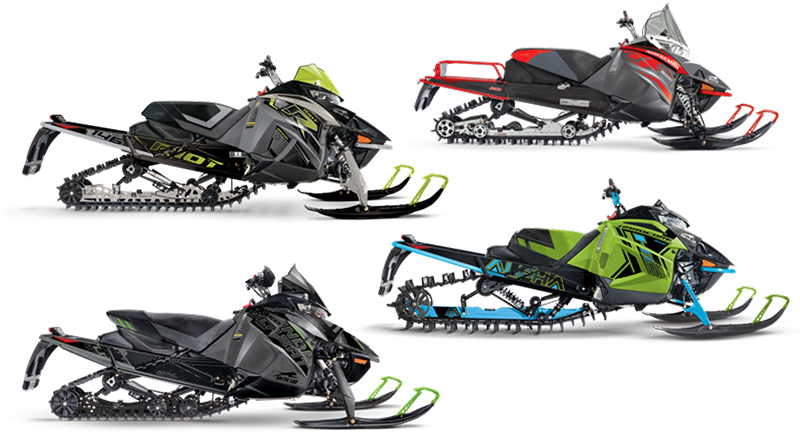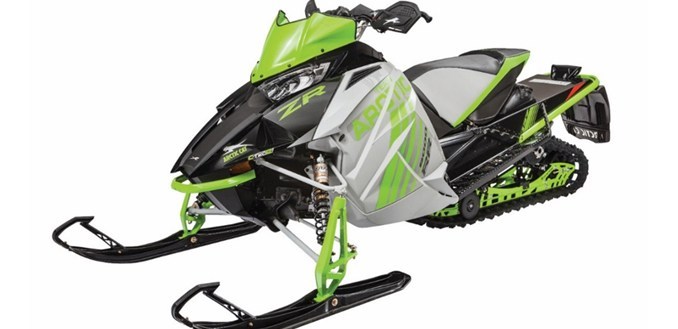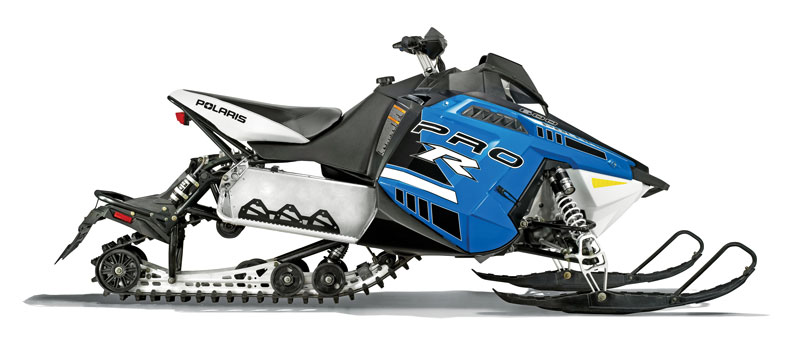… Continued from Page 5
SG: Off-topic: What do you guys do when you’re not working or thinking about snowmobiles? What are your hobbies? What’s your relaxation time look like?
HALLSTROM: Then Greg works on vintage snowmobiles [laughs].
SPAULDING: [laughs] Yeah, I’ve got a little sideline where I’ve got a little reproduction business for vintage snowmobiles. They are all new parts, but they are exactly duplicates.
SG: How about you, Donn?
EIDE: Well… In the wintertime it’s nice to go in the machine shop and do stuff after hours. But, when the weekend comes, um, I have a lake home I retreat to, whether it’s winter or summer. In the summer I do some pontooning, in the wintertime I’ll go snowmobiling at the lake home or ice fishing.
SPAULDING: I also build a few vintage race motors – I really like that. That’s fun.
HALLSTROM: They don’t have to meet emissions [laughs].
SPAULDING: And they aren’t very quiet either.
EIDE: Joey, that sled you raced a couple of years ago [in vintage classes], your 440 liquid… That 440 was first put in production in ’78. As a 440 ZR 6000, the motor was 72 pounds, and 68 horsepower. Now we’re 67 pounds and over 120 horsepower. So basically the horsepower to weight ratio has almost doubled in those years.
SPAULDING: Yeah, and then when you think far back. There was that 760 JLO twin – almost 800cc. And what did that thing make 35, maybe 40 horse? And that thing was frigging huge. And now our current 800 weighs 73 pounds? I could almost guarantee that old 760 weighed double that. The new motor makes better than 150 horse.
EIDE: That’s why two-strokes are still the engine of choice for snowmobiles.
SG: Are you two personally involved with the four-strokes in Cat snowmobiles?
SPAULDING: I’m not.
EIDE: But it falls under my group, yeah. We’ve got a four-stroke group and a two-stroke group.
SPAULDING: At some point, now that the new 600 has gone through design and it’s in the sleds and you’ve got all of these other people that have worked on it too. If there was ever an opportunity to name them… You know, Jeff Tweet and Mike McCardell, and Steve Broten, Larry and Bart, Larry Coltom… those guys have spent a ton of time on there, too.
JOEY: Yeah, those guys, and dynos, in the shop, there is more yet behind those guys. Dyno operators and fabricators, Steve Broten builds pipes for Greg, Glen Kaufler, Ole Tweet’s son, Jeff, is a dyno operator. You have the expertise of Larry Coltom, which is totally invaluable and he works for Greg and actually does some clutching. But he also does more than that – he rides the sleds and works with Greg on calibrations of the fuel system along with the clutching.
SG: When the first sleds are rolling down the line, or before the bulk of the engines are shipped from St. Cloud, do you think there will be any group picture or celebration? Will there be a point where the engine group pops champagne bottles or goes out for beer or a dinner or something to celebrate this first Cat snowmobile engine creation? Is there going to be a commemorative celebration with your group, either formal or informal? Or is it really more about internal pride for the members of the group?
EIDE: I don’t know, it depends on how much Brad [Darling] wants to do.
SPAULDING: I mean, some of us, if we’re down in St. Cloud helping out, which we have been, we’ll probably go out for a beer.
EIDE: The St. Cloud facility is such a state of the art facility equipped with all the tools and great personnel to build this engine. We’ll be there and for sure will have a group picture.
HALLSTROM: I think that’s our nature and our culture. We’re not real grandiose when it comes to stuff. We’ve got to be prodded sometimes to do stuff like that. Maybe we should – you know, a lot of times we do get accused of not tooting our horn loud enough. The gang here, you know, we just kind of take it for granted. We just get ’er done. Some companies will probably do way more fanfare and celebration with what they’ve got. But, I don’t know, I guess that’s just part of our Scandinavia upbringing and background (laughs).
EIDE: Right now, on everyones’ mind, you can tell and sense the urgency to follow through and produce it. They’ve talked about it and we’ve talked about it – the success now is going to be based on producing them all perfect. That’s our goal.
SG: In terms of testing your new engine. Whether it’s in terms of hours or miles or dyno time – do you have a way to quantify what kind of testing it’s been through before it gets to production?
SPAULDING: Oh, I don’t know – we could probably try to come up with an accurate number, but I can tell you it’s over 200,000 miles in two and a half winters. That’s only in the field, that’s not counting any dyno or in-house durability testing.
EIDE: And, what, maybe 80 to 100 engines have been done? From protos to production units.
SPAULDING: And they’ve been tested by a whole bunch of different people and driving styles.
EIDE: From the east to the west to central – everywhere.





